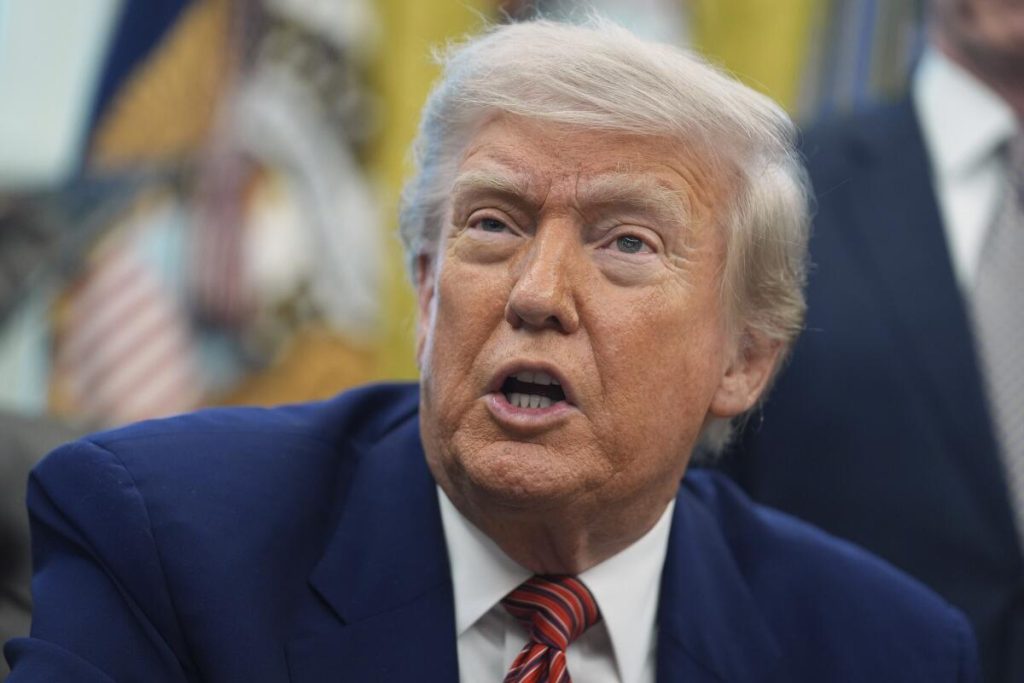The U.S. central bank is widely expected to keep interest rates unchanged at its upcoming meeting, despite facing escalating pressure from President Donald Trump.
Policymakers at the independent Federal Reserve have maintained the benchmark lending rate since the start of the year, closely monitoring the impact of Trump’s fluctuating tariff policies on the world’s largest economy.
Balancing Inflation and Employment Amidst Tariff Uncertainty
With the delayed effects of tariffs on inflation, Fed officials are waiting for economic data from the summer to fully assess price changes.
The central bank, which meets on Tuesday and Wednesday, aims to balance controlling inflation with maintaining a healthy job market when considering interest rate adjustments.
However, the Fed’s data-driven approach has infuriated President Trump, who has repeatedly attacked Fed Chair Jerome Powell for not cutting rates further, using terms like “numbskull” and “moron.”
Recently, Trump even hinted at using the Fed’s $2.5 billion renovation project as a way to remove Powell, though he later downplayed the likelihood.

A tense public appearance between Trump and Powell at the Fed construction site on Thursday saw the Fed chair dispute Trump’s cost estimations for the refurbishment.
Despite the political pressure, economists expect the Fed to prioritise economic data. “We’re just now beginning to see the evidence of tariffs’ impact on inflation,” said Ryan Sweet, chief US economist at Oxford Economics.
He anticipates that July and August data will give the Fed “reason to remain on the sidelines.”
Dissenting Voices and Labour Market Concerns
Since his return to the presidency in January, Trump has imposed a 10 per cent tariff on goods from most countries, along with higher rates on steel, aluminium, and autos.
The impact on inflation has been limited so far, which Trump uses to argue for a three-percentage-point cut in the benchmark lending rate, currently between 4.25 per cent and 4.50 per cent.
Trump also claims lower rates would save the government money on interest payments and has floated the idea of firing Powell, remarks that have rattled financial markets.
Sweet believes Powell will be more influenced by labour market concerns, noting that market reactions to the idea of his ouster demonstrated the value of an independent central bank. Powell’s term as Fed chair concludes in May 2026.
Analysts foresee a few members of the Fed’s rate-setting committee potentially dissenting if rates remain unchanged for a fifth consecutive meeting.
While some might interpret dissents as pushback against Powell, Sweet argues this isn’t necessarily the case.
Kathy Bostjancic, chief economist at Nationwide, added that “it’s not out-of-line or unusual to see, at times when there’s a high degree of uncertainty, or maybe a turning point in policy, that you get one or two people dissenting.”
Fed Governor Christopher Waller and Vice Chair Michelle Bowman have both indicated openness to rate cuts as early as July, so their disagreement would not surprise markets.
The “big wild card is the labour market,” according to Sweet. He points to weaknesses in the private sector, below-average hiring rates, and an increasing number of permanent job losses.
While there are “some fissures in the labour market,” they haven’t yet become “fault lines.” Sweet expects the Fed would move to cut interest rates sooner if the labor market were to weaken suddenly.


 Trending
Trending 